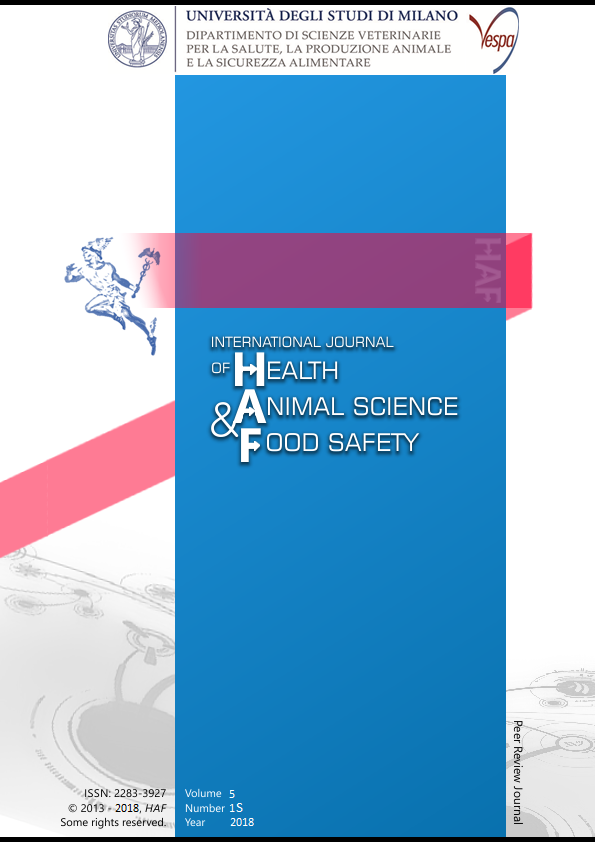Abstract
In equine sports medicine, the most considered performance parameter is the Onset of Blood Lactate Accumulation (OBLA), fixed at 4 mmol/L (Courocè-Malblanc et Hodgson, 2014). Nevertheless, in human medicine several methods to define individual Lactate Threshold (LT) were developed (Faude et al., 2009). Horses with poor performance were reported to have post-exercise creatine-kinase (CK) activity higher than good performer (Fraipont et al., 2011). Aim of the study is to evaluate LTs calculated by different methods in horses with increased post-exercise CK activity.
Data from a cohort of Standardbred racehorses that underwent poor performance evaluation, including incremental treadmill test with plasma lactate analysis at different speed steps, were retrospectively collected. A blood sample was collected 6hrs post-exercise and CK activity was evaluated with spectrophotometric method. A case group of 10 horses (3.1±1.0 y.o.) that did not present any other alteration potentially influencing performance than post-exercise CK activity greater than reference value (>735 U/L) was selected (Valli, 2017). An age-matched and sex-matched control group of 10 horses with no alteration potentially influencing performance and normal post-exercise CK activity was selected. Lactate concentrations obtained during treadmill test were analysed with a dedicated sotware (Newell et al., 2009) and LT was determined by the following methods: a)Inflection Point, i.e. the point of intersection between two linear splines, b)Lactate Threshold by logaritmic transformation, c)OBLA and d)Initial Rise of 1 mmol/L post baseline. Values of different LTs from the two groups were compared by means of unpaired t-test.
Statistical analysis showed that OBLA was significantly lower (p=0.009) in case group when compared to controls. No differences between the two groups were observed for other LTs values.
Results suggest that elevated post-exercise CK activity, consistent with muscular damage, has a negative impact on performance. Moreover, OBLA seems to be an appropriate parameter for performance profiling in racehorses.
Riferimenti bibliografici
Courocè-Malblanc, A., Hodgson, D.R. 2014 Clinical exercise testing. In: Hodgson D.R., Mc Keever K.H., Mc Gowan C.M. The athletic horse: principle and practice of equine sport medicine. 2nd Edition, Saunders, St. Louis, 366-378
Faude, O., Kindermann, W., Meyer, T. 2009 Lactate threshold concepts: How valid are they? Sports Medicine, 39(6), 469–490
Fraipont, A., Van Erck, E., Ramery, E., Richard, E., Denoix, J.M., Lekeux, P., Art, T. 2011 Subclinical diseases underlying poor performance in endurance horses: diagnostic methods and predictive tests. Veterinary Records 169(6) 154–154
Newell, J., Higging, D., Madden, N., Cruickshank, J, Einbeck, J., McMillan, K., McDonald, K. 2007 Software for calculating blood lactate endurance markers. Journal of Sports Sciences, 25(12), 1403–1409
Valli, C., 2017 Determinazione degli intervalli di riferimento dell’enzima creatinchinasi (CK) prima e dopo esercizio massimale in una popolazione di cavalli trottatori in attività sportiva. Degree Dissertation
This work is licensed under a CC BY-SA 4.0 international

